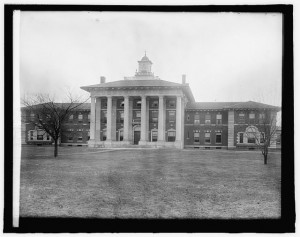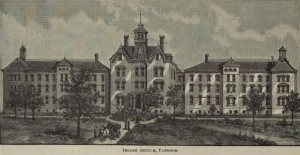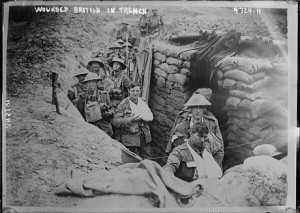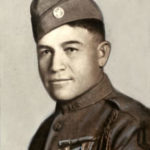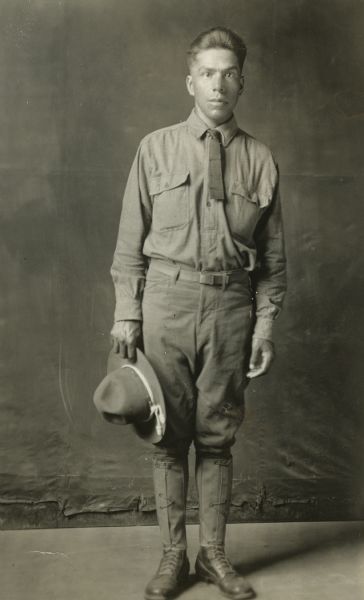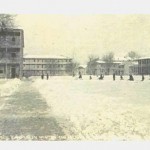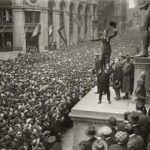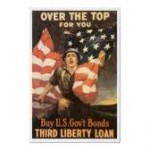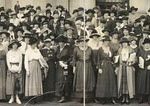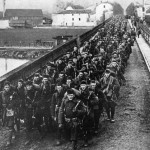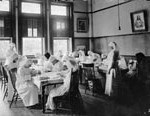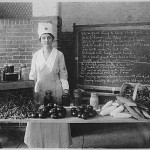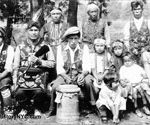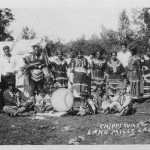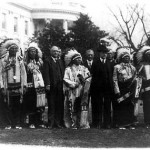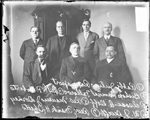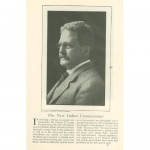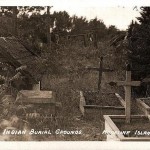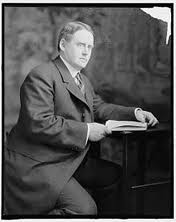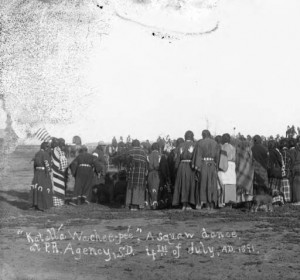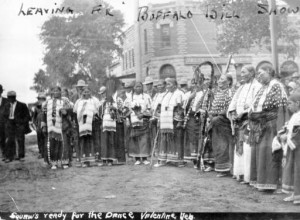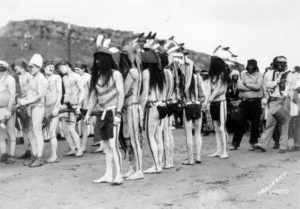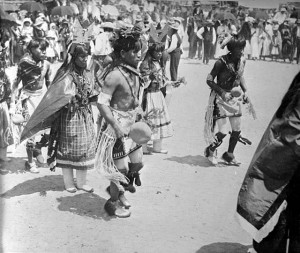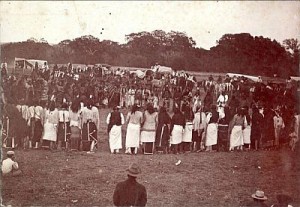In 1917, the National Committee for Mental Hygiene (see last post) canvased various hospitals to see where soldiers and sailors could be treated for mental conditions created by the war. They naturally turned to government facilities like veterans’ hospitals and the government’s two existing insane asylums. The larger of these latter facilities, St. Elizabeths, was already charged with the care of insane military members. Its superintendent, Dr. William White, submitted his thoughts on the matter to the Secretary of the Interior, saying that a large influx of insane patients would require a correspondingly large increase in facilities. The plan in place was to ask for statutory authority “to distribute the overflow from the present organization [St. Elizabeths] to the several State hospitals.” Using caution before commitment, White asked how many patients might be expected, and whether or not the Secretary wanted them housed in temporary or semi-permanent structures.
Dr. Harry Hummer, superintendent at the government’s other insane asylum, the Canton Asylum for Insane Indians, offered his own thoughts about the ability of St. Elizabeths to care for mentally unstable soldiers. He wrote to the commissioner of Indian Affairs: “It occurs to me that with the already overcrowded condition at St. Elizabeth’s Hospital, Washington, D. C., it will be impossible for the authorities of that institution to care for the rather sudden accession of cases of mental disease which the present war will necessarily entail. . . . . It is barely possible that the federal government will decide that each State shall care for its own insane. In that event it will be necessary for the State of South Dakota to care for its insane, either at the Asylum at Yankton or otherwise.”
Hummer asked the practical question concerning the number of patients who might need care, and provided his own tentative calculations for the commissioner. Hummer estimated that 20-25 percent of South Dakota’s soldiers and sailors might become incapacitated during the war, and that of that number, ten percent would be mental cases. Therefore, he thought that one-fortieth of the men enlisted from the state would need to be cared for at one of its institutions.
Hummer added: “I am sorry that your Office decided that we should not build the proposed epileptic cottage, as this would have given us additional beds which might have been used for the purpose now in question.”
______________________________________________________________________________________
